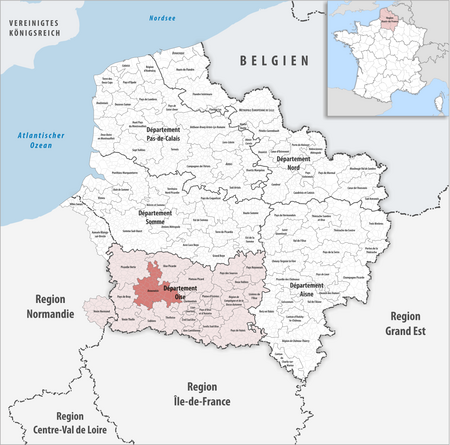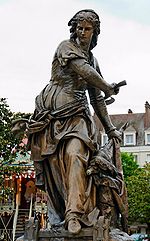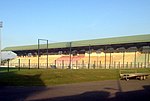Communauté d'agglomération du Beauvaisis
Agglomeration communities in FranceHauts-de-France geography stubsIntercommunalities of Oise

The Communauté d'agglomération du Beauvaisis is a communauté d'agglomération located in the Oise department and in the Hauts-de-France region of France. Its seat is in the town Beauvais. It was created on 1 January 2017 by merger of the former Communauté d'agglomération du Beauvaisis with the Communauté de communes rurales du Beauvaisis, and was expanded with 9 communes from the Communauté de communes de l'Oise Picarde in January 2018. Its area is 539.0 km2. Its population was 103,934 in 2020, of which 56,889 in Beauvais proper.
Excerpt from the Wikipedia article Communauté d'agglomération du Beauvaisis (License: CC BY-SA 3.0, Authors, Images).Communauté d'agglomération du Beauvaisis
Voie des Chasse-Marée, Beauvais
Geographical coordinates (GPS) Address Website Nearby Places Show on map
Geographical coordinates (GPS)
| Latitude | Longitude |
|---|---|
| N 49.4327 ° | E 2.0814 ° |
Address
Cathédrale Saint-Pierre de Beauvais
Voie des Chasse-Marée
60000 Beauvais
Hauts-de-France, France
Open on Google Maps









